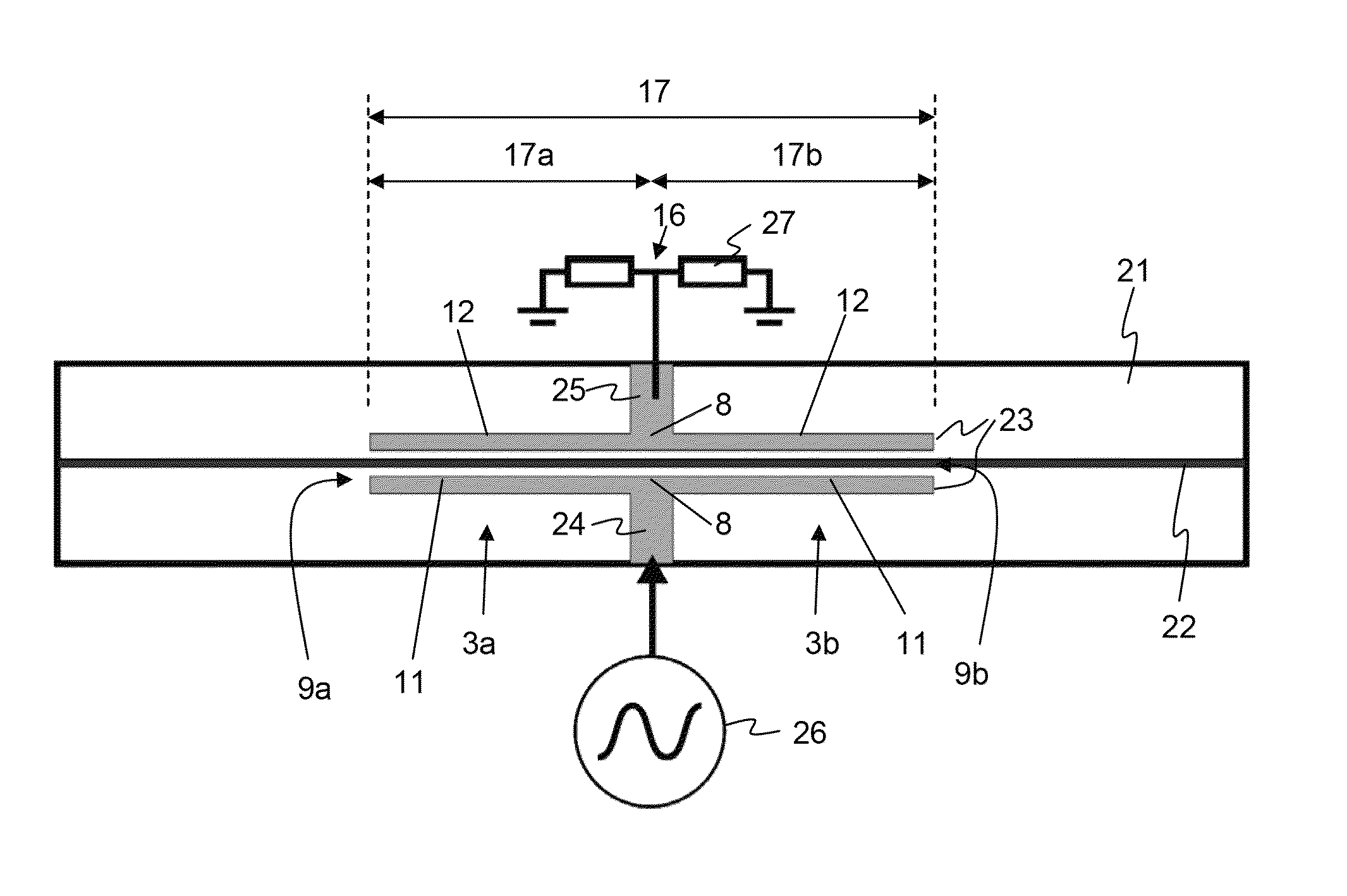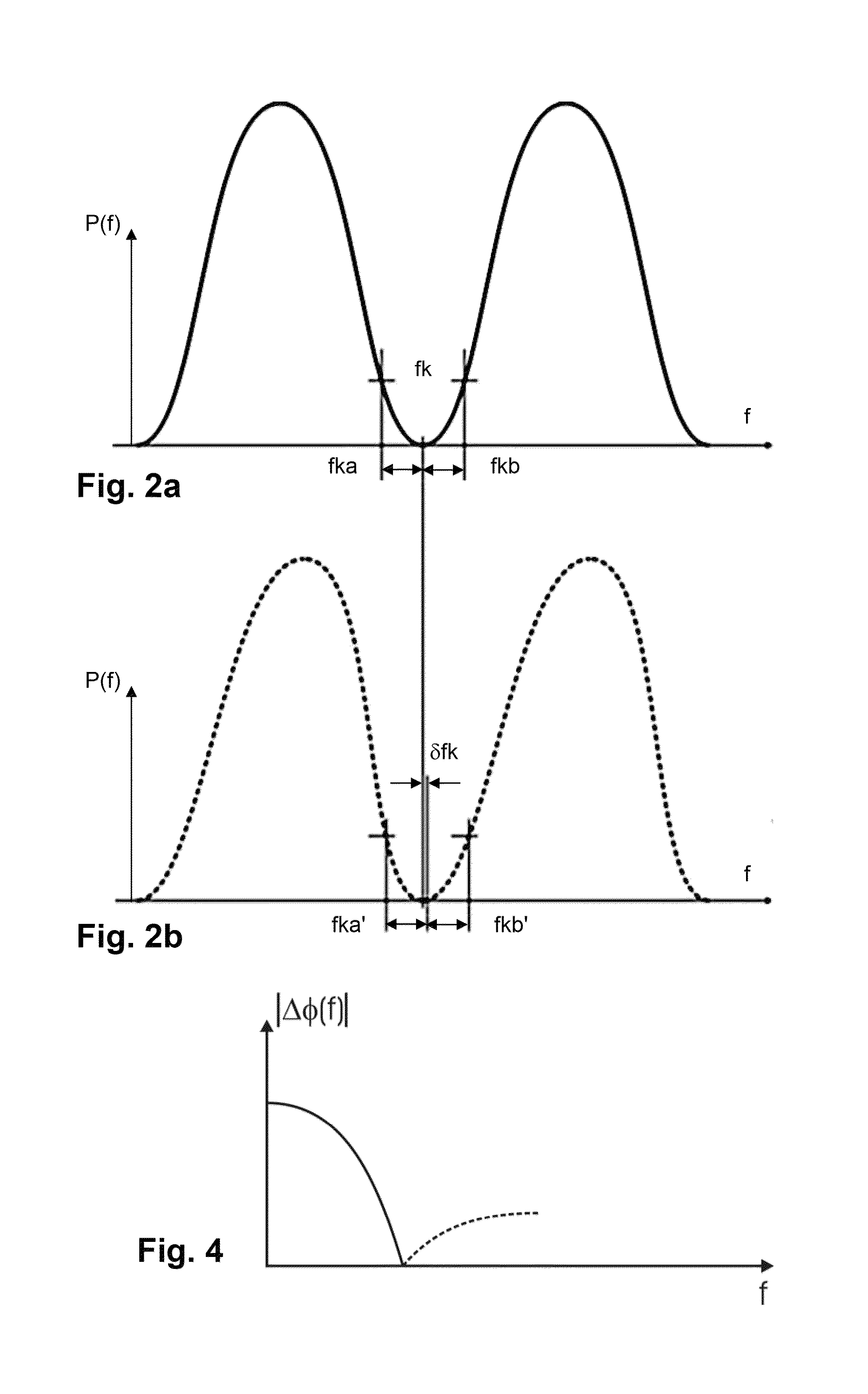Electro-optic distance-measuring device
a technology of optical distance measurement and measuring device, which is applied in the direction of measurement device, electromagnetic wave reradiation, instruments, etc., can solve the problems of limiting the measurement rate (to e.g. 20 hz), and the inability of known single-pass modulators to meet the needs of measuremen
- Summary
- Abstract
- Description
- Claims
- Application Information
AI Technical Summary
Benefits of technology
Problems solved by technology
Method used
Image
Examples
Embodiment Construction
[0042]In principle, identical parts are provided with the same reference symbols in the Figures.
[0043]Convention: A phase modulator uses an electro-optic crystal. The index of modulation will define the so-called half wave voltage Vπ. The half-wave voltage is a characteristic of an electro-optic modulator and corresponds to the voltage that needs to be applied to the crystal in order to modify the optical phase of transmitted light by π-radians.
[0044]A guided wave configuration of an electro-optic modulator is as follows: a straight optical waveguide is shaped in a crystal surface, allowing the confinement of light in a small channel whose cross section is of some micrometers in width and height. Coplanar electrodes are arranged near the waveguides with a gap of some micrometers, application of a strong electric field to the waveguide. The half wave voltage can reduced to a few volts, much less than for bulk crystal modulators.
[0045]Guided wave modulators in, e.g. lithium niobate, c...
PUM
 Login to View More
Login to View More Abstract
Description
Claims
Application Information
 Login to View More
Login to View More - R&D
- Intellectual Property
- Life Sciences
- Materials
- Tech Scout
- Unparalleled Data Quality
- Higher Quality Content
- 60% Fewer Hallucinations
Browse by: Latest US Patents, China's latest patents, Technical Efficacy Thesaurus, Application Domain, Technology Topic, Popular Technical Reports.
© 2025 PatSnap. All rights reserved.Legal|Privacy policy|Modern Slavery Act Transparency Statement|Sitemap|About US| Contact US: help@patsnap.com



